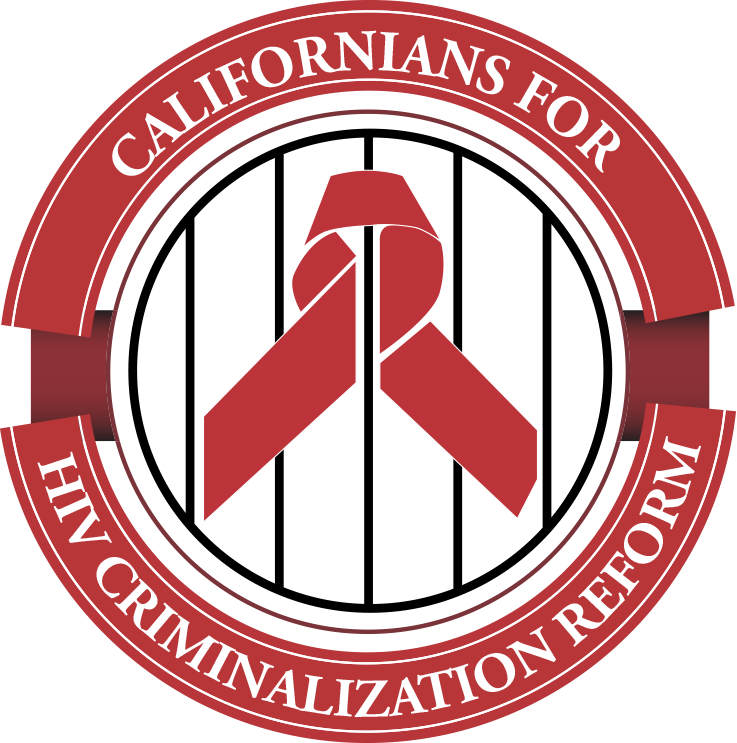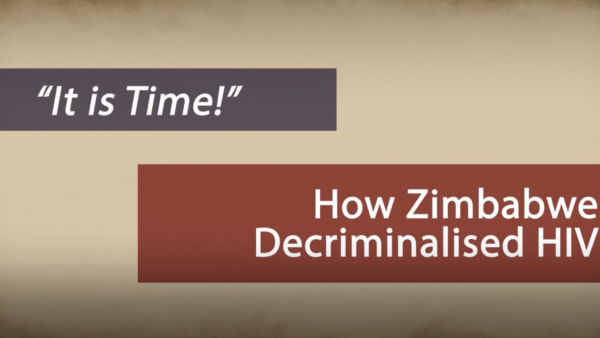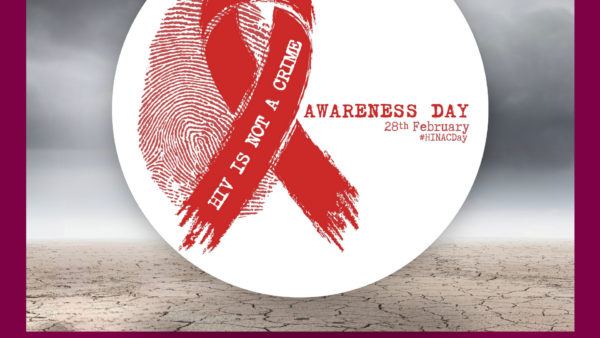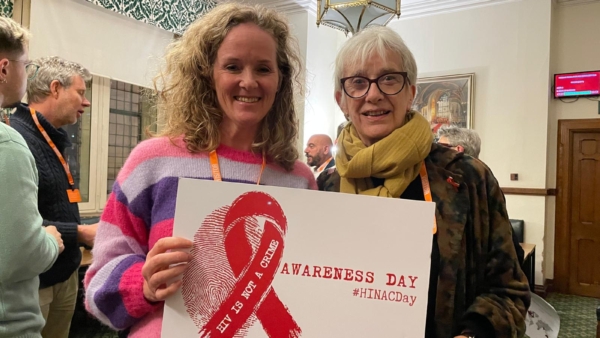
Rethinking Criminalization of HIV Exposure — Lessons from California’s New Legislation
Laws that criminalize certain behaviors on the basis of the person’s HIV status have long been challenged as ineffective prevention measures that harm public health. They are nevertheless widespread: according to the Center for HIV Law and Policy, 34 states have HIV-specific criminal statutes, and 23 have applied more general laws (e.g., against assault with a deadly weapon) in order to criminalize HIV exposure. Most of these laws don’t reflect current evidence regarding protective factors such as antiretroviral treatment (ART), and many encompass behaviors that carry negligible risk.
California is now breaking from these precedents. In October 2017, Governor Jerry Brown signed SB 239, which reduces the criminal charges associated with exposing a sexual partner to HIV without disclosing one’s HIV status. In place of former felony charges, California will impose misdemeanor charges that carry a maximum of 6 months of jail time and will reserve penalties for intentional disease transmission. The law also repeals felony charges for solicitation (prostitution) by people who have tested positive for HIV, and it decriminalizes their donation of blood or tissue.
The strongest arguments for criminalizing HIV exposure emphasize two functions of criminal law: retribution and deterrence. But emerging evidence casts doubt on both those justifications. The justification for criminalizing HIV exposure for the purpose of retribution is that such behavior is morally blameworthy. If we follow this rationale, the defendant’s state of mind is important. Most HIV-specific statutes, however, omit intent to infect as a condition of the offense — simply being aware of one’s HIV status is enough to warrant a penalty. Such laws also do little to differentiate among reasons for nondisclosure (e.g., fears of partner violence, or economic necessity for sex workers), and they often impose heavy penalties for conduct that poses slim risks of infection or about which there is substantial moral ambiguity.1 Retribution is particularly inappropriate for behaviors that have virtually no capacity to transmit infection, and prevention tools for HIV-positive people (e.g., ART) have reclassified many activities as lower risk.
Evidence also indicates that penalties associated with HIV-specific statutes are unevenly imposed on the basis of race and sex. In California, for example, black and Latino people compose half the population of people with HIV but two thirds of defendants in HIV-criminalization cases; black women, in particular, account for only 4% of the state’s HIV-positive population but 21% of these cases.2Moreover, among people arrested for HIV-related crimes, white men were released and not charged in 61% of incidents, as compared with 44% of incidents for black women, 39% for white women, and 38% for black men. Discriminatory enforcement of HIV-criminalization statutes compounds injustices based on race, sex, and socioeconomic status, and it undermines the retributivist rationale for HIV criminalization.
Judged against the goal of deterrence, HIV-specific statutes haven’t been successful, and they may detract from more effective prevention efforts such as advances in treatment and blood-supply screening. Past analyses have found that neither the presence of an HIV-criminalization statute nor people’s awareness of it affects their views regarding responsibility for HIV transmission.1 These statutes therefore may not affect moral calculations for people making disclosure decisions. And although awareness of the law and fear of prosecution have been associated with earlier disclosure of serostatus, analyses have found no effect of these statutes on rates of sex without using condoms or on HIV or AIDS incidence,1,3 perhaps in part because 40% of new infections can be traced to people who don’t know their HIV status.4
The deterrence rationale is particularly weak for statutes that neglect scientific evidence on HIV transmission and prevention. A majority of Americans with HIV have achieved viral suppression, which is proven to reduce, if not eliminate, transmission risk. Similarly, criminalization of blood donation neglects the fact that donated blood is now screened for HIV before use, resulting in residual risks that are lower than 1 per 1 million donations, and Food and Drug Administration guidelines exclude donors who may be at risk. Criminalizing blood donation by people with HIV doesn’t add to these protections and may discourage donors from disclosing information on risk behaviors.
Research increasingly suggests that HIV-criminalization statutes can also cause harm. Such laws may increase HIV-related stigma, which is linked to poor engagement in care. The possibility of criminal penalties for known exposure may also encourage people to remain unaware of their HIV status and to withhold information that is central to partner-notification efforts. One analysis, for example, found that HIV testing decreased after there was media coverage of HIV-specific prosecutions.5 Providers have also reported that criminalization inhibits trusting relationships with their patients with HIV, potentially leading to deferred ART treatment (and reducing its potential for preventing transmission).
Unlike most state legislation penalizing HIV exposure, California’s new misdemeanor statute reflects up-to-date science. The law applies only to people who know they have an infectious disease, who act with specific intent to transmit the disease to another person, who engage in conduct posing a substantial risk of transmission without attempting to prevent transmission, and who transmit the disease to someone who doesn’t know that the person is infected. Behaviors such as spitting and biting aren’t considered to pose substantial risk, and acquiring an infection while pregnant and refusing treatment while pregnant are specifically exempted. The statute encompasses all infectious diseases, not just HIV — which may mitigate HIV-related stigma.
We believe that California’s new legislation is a meaningful improvement over its former law, although the remaining misdemeanor charge may still permit discriminatory enforcement based on race and sex. HIV status may also still be used as a sentence enhancement for some nonconsensual sex offenses.
California is not alone in taking a more evidence-based and less stigmatizing approach to HIV prevention. In 2016, for example, Colorado repealed two HIV-criminalization laws and modernized its statutory language regarding sexually transmitted infections. But additional developments counsel against optimism; the Ohio Supreme Court recently upheld a charge of felonious assault for people with HIV who have sex without disclosing their HIV status.
Laws criminalizing HIV exposure and transmission can distract from the real challenges involved in preventing the spread of HIV, and they fail to account for the structural factors that underlie risk. We believe existing HIV-criminalization statutes should continue to be restructured, amended, or repealed. A broad-based harm-reduction approach could involve modernizing statutory language on infectious disease, updating prosecutorial guidelines, developing guidance to support HIV treatment and testing efforts that may be affected by laws, and supporting research into how criminal statutes affect HIV prevention and treatment. By providing draft language for amended legislation and crafting model policies for public health authorities, researchers and advocates can help states move toward more evidence-based and effective responses to HIV.
Authors affiliations
From the Department of Health Administration and Policy, George Mason University, Fairfax, VA (Y.T.Y.); and the Columbia Law School and the Mailman School of Public Health, Columbia University, New York, NY (K.U.).
References:
-
Burris S, Beletsky L, Burleson JA, Case P, Lazzarini Z. Do criminal laws influence HIV risk behavior? An empirical trial. Ariz State Law J 2007;39:467–519 (http://ssrn.com/abstract=977274).
-
Hasenbush A, Miyashita A, Wilson BDM. HIV criminalization in California: penal implications for people living with HIV/AIDS. Los Angeles: The Williams Institute, December 2015(https://williamsinstitute.law.ucla.edu/research/health-and-hiv-aids/hiv-criminalization-in-california-penal-implications-for-people-living-with-hivaids/).
-
Sweeney P, Gray SC, Purcell DW, et al. Association of HIV diagnosis rates and laws criminalizing HIV exposure in the United States. AIDS 2017;31:1483–1488.
-
Dailey AF, Hoots BE, Hall HI, et al. Human immunodeficiency virus testing and diagnosis delays — United States. MMWR Morb Mortal Wkly Rep 2017;66:1300–1306.
-
Lee SG. Criminal law and HIV testing: empirical analysis of how at-risk individuals respond to the law. Yale J Health Policy Law Ethics 2014;14:194–238.
Published in the New England Journal of Medicine, March 29, 2018
N Engl J Med 2018; 378:1174-1175
DOI: 10.1056/NEJMp1716981








